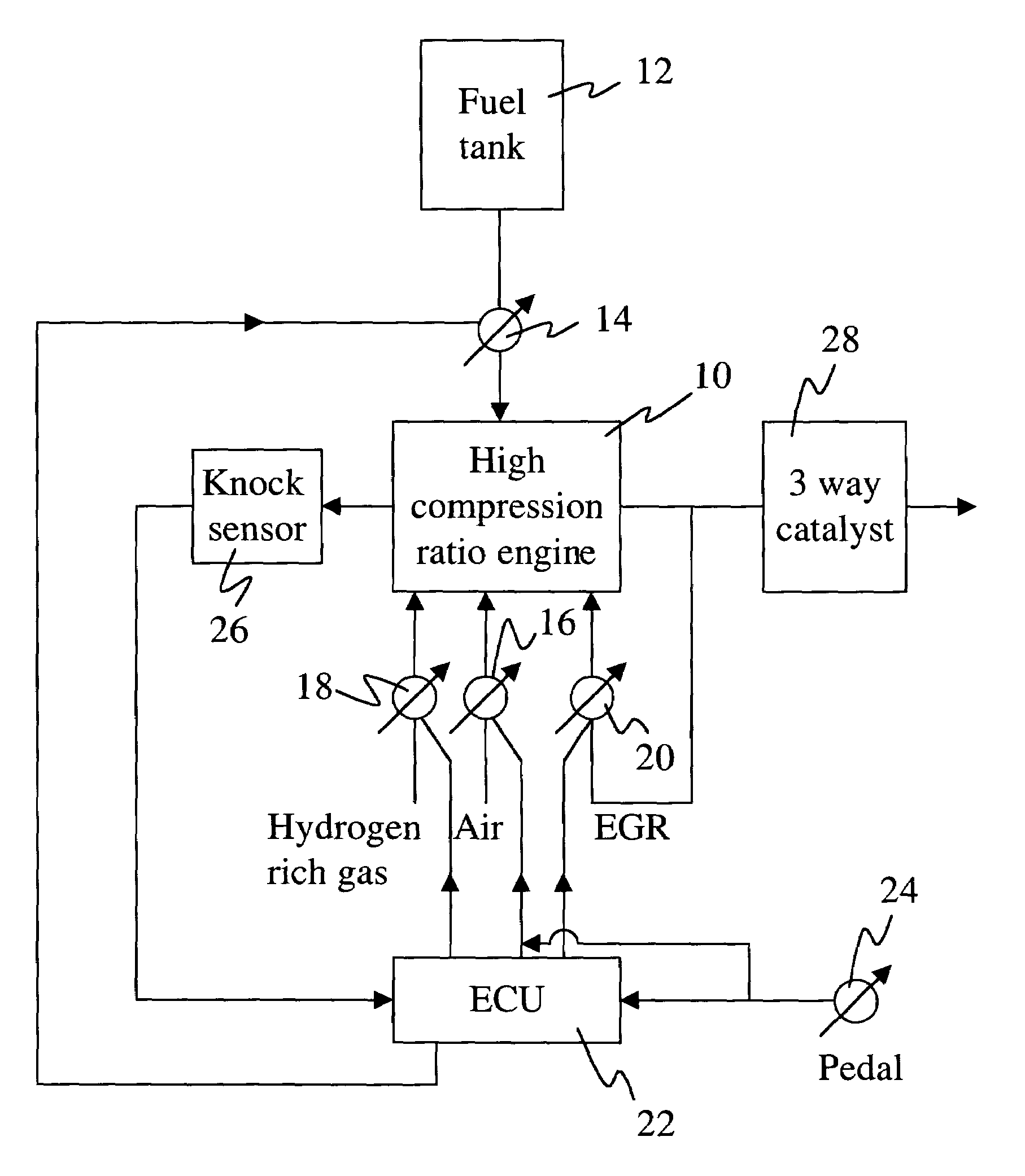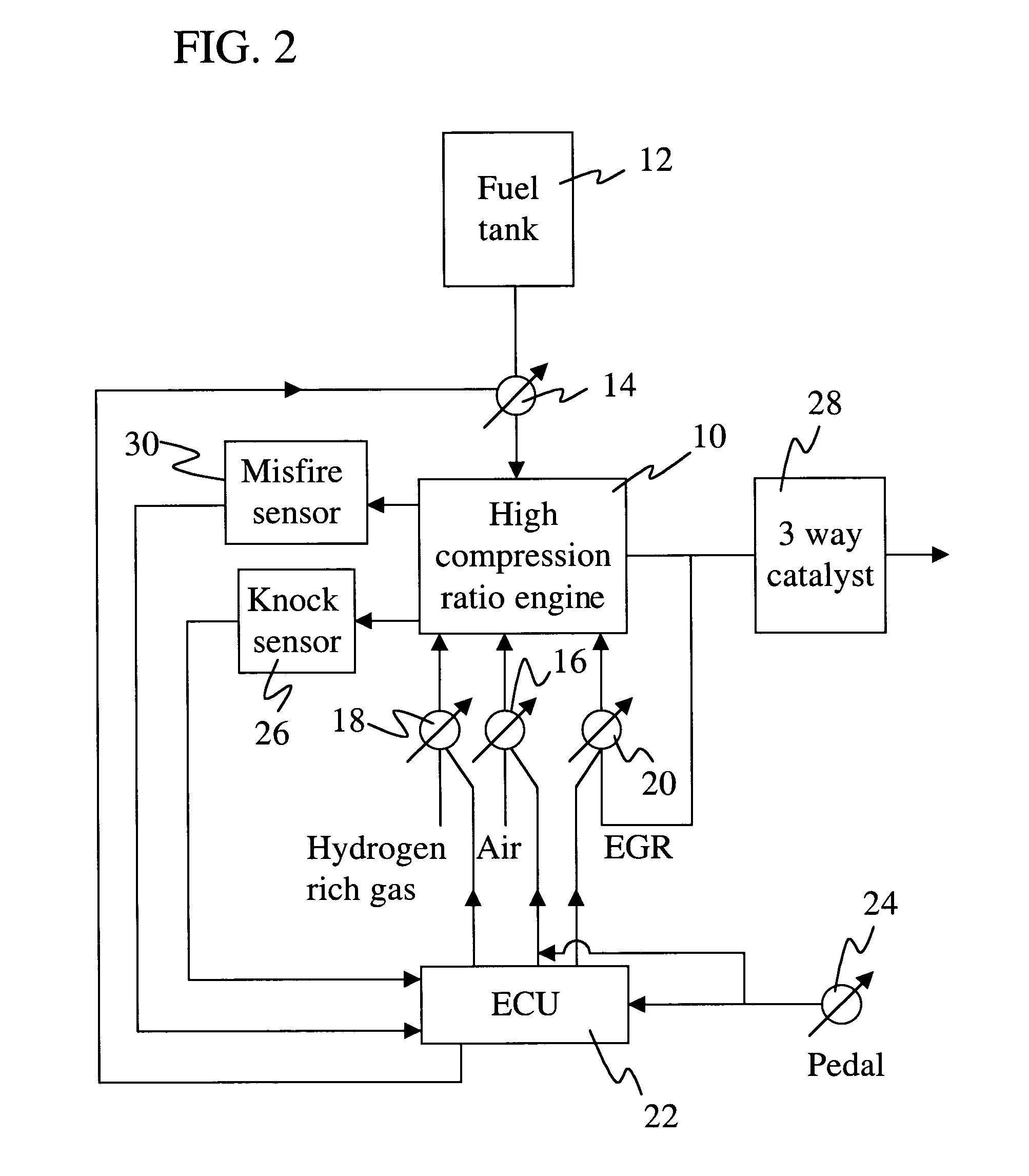High compression ratio, hydrogen enhanced engine system
a hydrogen enhanced, high-efficiency technology, applied in the direction of machines/engines, mechanical equipment, electric control, etc., can solve the problems of reduced net efficiency, no, or even negative net efficiency gain at conventional compression ratios, and reduce the overall equivalence ratio operation. , the effect of preventing knock
- Summary
- Abstract
- Description
- Claims
- Application Information
AI Technical Summary
Benefits of technology
Problems solved by technology
Method used
Image
Examples
Embodiment Construction
[0024]An engine system involving a certain set of hydrogen / gasoline engine fuel-to-air ratios and other parameters is used to optimize conditions for achievement of a given set of goals for overall performance of a high compression ratio (rc=11–16) spark-ignition engine. The hydrogen can be provided by an onboard gasoline-to-hydrogen fuel converter external to the engine, a converter that provides hydrogen internally in the engine block, or by onboard storage of hydrogen that is produced externally to the vehicle. Optimization involves minimization of NOx, fuel consumption, hydrogen requirements and cost. Changes in various parameters are made in response to engine torque or power level, signals from knock sensors, misfire sensors and other inputs.
[0025]At lower torque or power levels, which constitute a high fraction of the driving time, very lean operation is used to maximize NOx reduction and engine efficiency. When the engine torque or power level reaches a certain percentage of...
PUM
 Login to View More
Login to View More Abstract
Description
Claims
Application Information
 Login to View More
Login to View More - R&D
- Intellectual Property
- Life Sciences
- Materials
- Tech Scout
- Unparalleled Data Quality
- Higher Quality Content
- 60% Fewer Hallucinations
Browse by: Latest US Patents, China's latest patents, Technical Efficacy Thesaurus, Application Domain, Technology Topic, Popular Technical Reports.
© 2025 PatSnap. All rights reserved.Legal|Privacy policy|Modern Slavery Act Transparency Statement|Sitemap|About US| Contact US: help@patsnap.com



